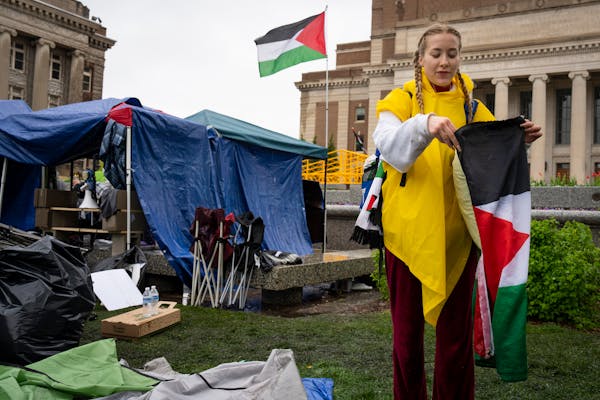As Pheasants Fest opens in St. Paul today, celebrating Pheasants Forever's 25th anniversary, the future of pheasants has perhaps never been so uncertain. Record commodity prices are prompting many farmers to plow under conservation seta-side acres and seed them to crops, corn particularly. And the developing biofuel revolution will further spur cover-type changes across the nation's farmlands.
How these related phenomena play out will pose significant consequences for farmland wildlife.
Continuing climate change also could have an impact. If warmer winters and drier summers become a reality in Minnesota, pheasants, ducks and other wildlife will be affected -- some, positively, some, perhaps, adversely.
Uncertainties of this kind and scope are unprecedented. Yet -- the good news -- never before have so many people in the state been so attuned to the plight of these species.
Examples: Pheasants Forever (PF) has more than 22,000 members in Minnesota alone. Add to these the more than 40,000 Ducks Unlimited (DU), members here, the 26,000 National Wild Turkey Federation members, and a similar number who belong to The Nature Conservancy and other groups, including the Minnesota Waterfowl Association and the Izaak Walton League, and the state's conservation community would seem never to have been more organized to defend farmland and other habitat.
But the amount of conservation money raised and spent in Minnesota will have to increase significantly in the near future if the goal of maintaining and conserving a healthy, diversified landscape is to be met.
The reason: The price of access to private farmland to practice conservation is rising nearly exponentially. Pressure to produce corn for production of ethanol is a primary reason.
State and national conservation groups also will need to boost their political clout. Only by doing so will conservation proposals such as constitutionally dedicated funding in Minnesota and conservation provisions such as those in the federal farm bill be assured.
The need for increased conservation is rising with the cost. As farmers convert buffer strips and set-aside acres to cropland and use ever greater amounts of fertilizer and other chemicals, threats to the environment increase.
Even now, agriculture lobbyists are pressuring Congress and the USDA to release some farmers early from their Conservation Reserve Program contracts.
In the near term, wildlife habitat losses, increased stream siltation and more algae-laden lakes are likely. More money -- a lot more -- will be needed if conservationists are to meet these challenges.
But history shows wildlife groups can't pay the bill alone.
PF has spent about $31 million for habitat purchases and development in Minnesota in 25 years. Ducks Unlimited has expended a similar amount since 1985. Sales from the state pheasant stamp have kicked in another $15 million since 1983. Other organizations, The Nature Conservancy in particular, have spent similar amounts.
Yet collectively these represent a relative drop in a bucket compared to the profit incentives now enticing farmers to increase crop production at the expense of set-aside acres.
Indeed, the real power of conservation organizations with active membership bases such as Ducks Unlimited and Pheasants Forever might lie less with the money they raise than the political clout they muster to influence federal and state land-use policies.
Case in point: Pheasants Forever 25 years ago passed a state pheasant stamp the old fashioned way: by buttonholing, cajoling and pressuring legislators, and, when those failed, reasoning. As part of that process, Roger Holmes, retired Minnesota Department of Natural Resources fish and wildlife chief, suggested $25,000 in stamp proceeds be directed to farm-bill conservation lobbyists in Washington.
Holmes also urged wildlife managers in other states to make similar contributions. From this and other actions, CRP was born in the 1985 farm bill.
Now another farm bill is awaiting approval in Washington. So important have conservation groups become since 1985 in development of this far-reaching legislation that acting USDA Secretary Chuck Conner and U.S. Sen. Tom Harkin, D-Iowa, and Rep. Collin Peterson, D-Minn., respective chairs of the Senate and House agriculture committees, will speak at Pheasant Fest Saturday.
Meanwhile, in Minnesota, the most important conservation program ever proposed -- constitutionally dedicated funding -- awaits finalization in the Legislature and approval at the polls in November.
Recall that in the past 25 years PF and DU together have spent about $60 million for Minnesota habitat. Their contributions will be even more important in the next 25 years.
As will those of dedicated funding, whose promise is to set aside $100 million per year for fish and wildlife habitat and $100 million per year for clean water.
Upshot: The future of pheasants, ducks and other wildlife is very uncertain. Join a group. Contribute your time and money. Stay informed. And be sure your legislators support constitutionally dedicated funding.
Sunday: Will corn-based ethanol give way to making gas from grass? If so, whither wildlife? Also, Doug Smith profiles PF's most productive chapter in Minnesota.
Dennis Anderson is at danderson@startribune.com

Anderson: Building a new Waterville fish hatchery will help shorten the time between bites

Anderson: Trailblazing sonar will be in thousands of boats for opener

Anderson: Celebrate Earth Day by rekindling real connection to nature
Anderson: Anglers protesting tough new Mille Lacs rules are wrong


